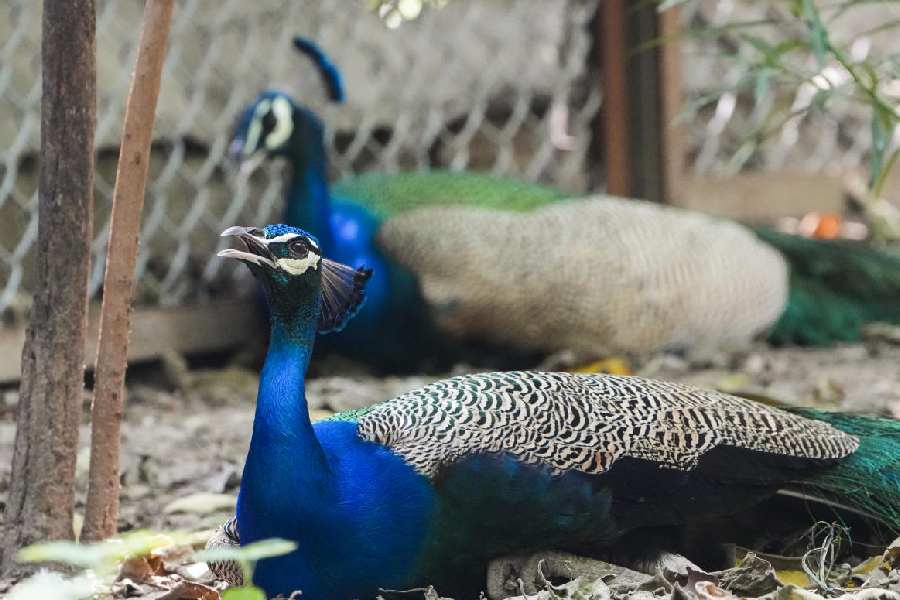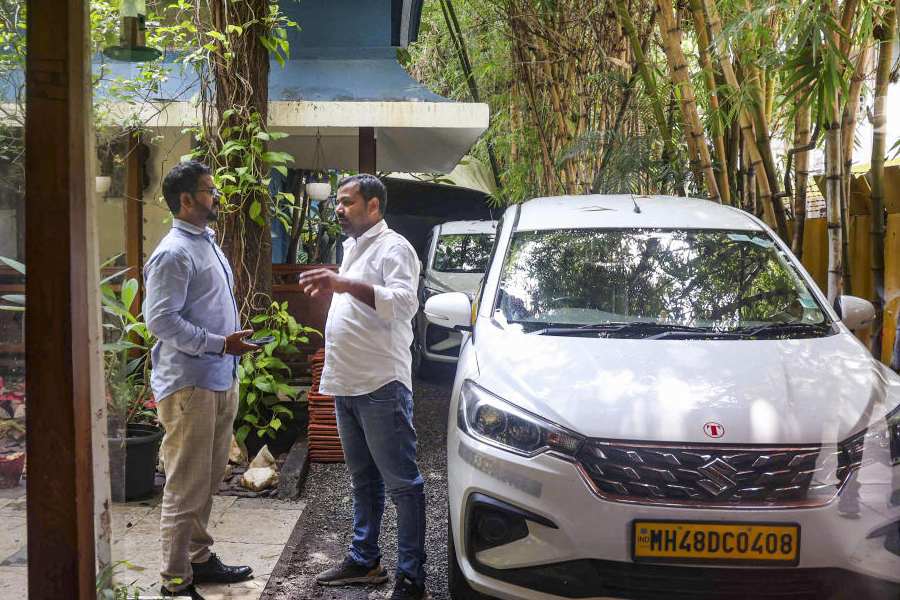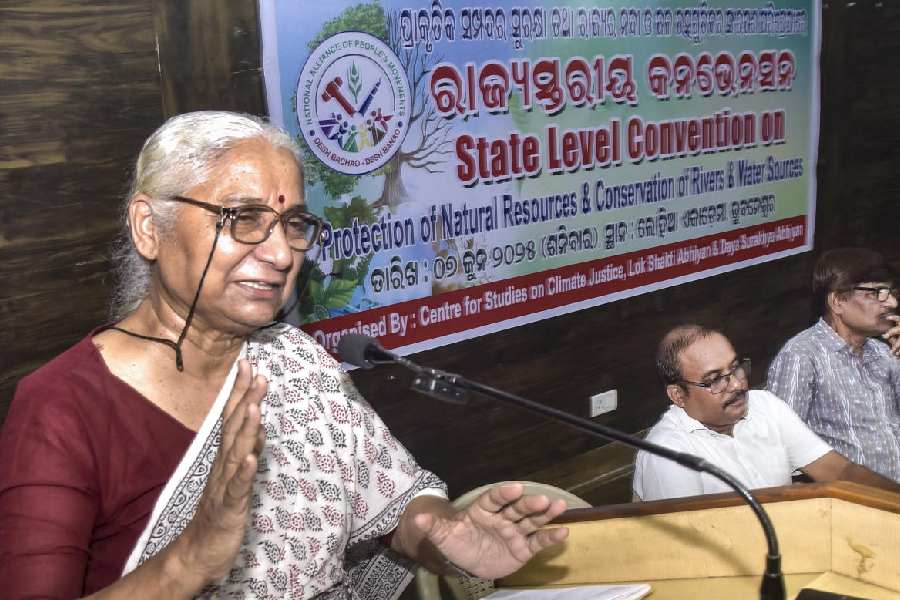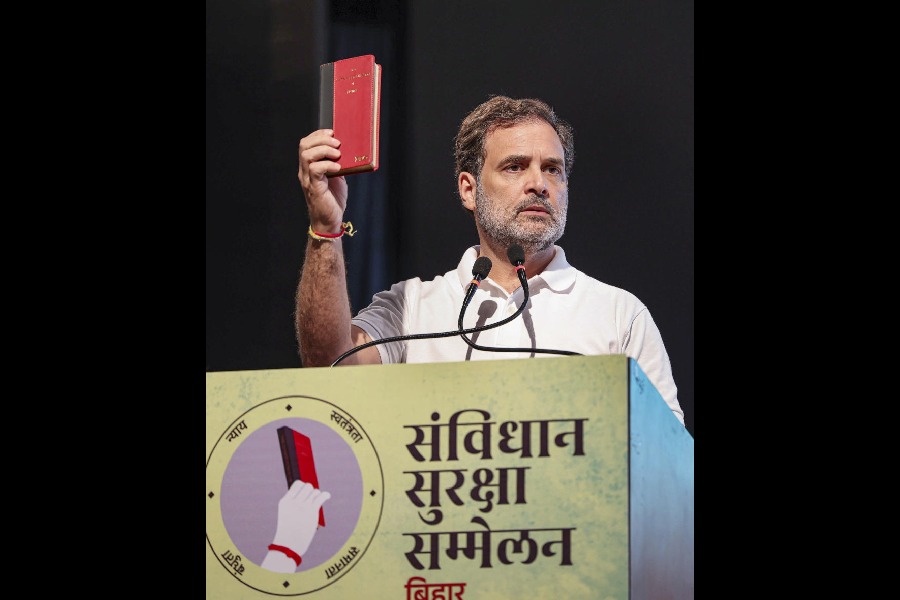London, Jan. 19: On of the face of it there is little in common between the final farewell for Jyoti Basu on Tuesday in Calcutta and the funeral of Diana, Princess of Wales, in London on September 6, 1997.
However, all such goodbyes are as much a lament for the departed as for those left behind, a grieving for what might have been and, in the case of state funerals, in which the British excel, an opportunity for the organisers to put on a show.
Diana’s was undoubtedly the biggest celebrity funeral of the modern age, watched, it is estimated, by 2.5billion people across the world. By dying young and so unexpectedly in a car crash in a Paris tunnel, leaving behind a husband who had gone off with another woman and two vulnerable young sons, who stood heads bowed at their mother’s funeral, Diana provided the essential ingredient for a memorable funeral – tragedy.
Marilyn Monroe did that she died of an overdose in 1962, aged 36 – the same age as Diana, incidentally. Michael Jackson’s passing last year at the age of 50 also broke the hearts of his fans across the globe, as did Elvis Presley’s, when he was 42, in 1977. Many have remained “lonesome”.
For a funeral to be remembered, it has to be emotional but marked by quiet dignity, a profusion of freshly picked flowers, moving music and great oration. What survives is usually one iconic image that captures the essence of the occasion.
There are several from the funeral of the John F. Kennedy, the handsome American president cut down at 46 by an assassin’s bullets in Dallas in 1963 with his bloodstained and hauntingly beautiful wife Jacqueline by his side. However, the one that has been used down the years is of the president’s son, John Jr, saluting his father’s passing cortege on what was the boy’s third birthday. The photograph has increased in value for the little boy would grow up and himself perish in a plane crash in 1999, along with his wife and sister-in-law.
As with the Nehru-Gandhis in India, tragedy, in a curious way, has enhanced the glamour of the Kennedys in America.
There are also many iconic images – and moments – from Diana’s funeral but among those watching across the globe there could not have been too many dry eyes when Elton John sang a special arrangement of his song Candle In The Wind: Goodbye England’s rose.
It is said, perhaps with some justification, that Diana’s death marked a defining moment in the history of a nation. Englishmen, who prided themselves on their “stiff upper lip” during the time of the Raj, stood weeping openly, their arms entwined round their partners (who were not always men).
This was the moment which confirmed the arrival of the new England as Elton John’s words drifted across the packed parks of the country and the panning cameras caught the tear-stained faces of young and old alike, black and white, grieving for the loss of their “People’s Princess”:
And it seems to me you lived your life
like a candle in the wind:
never fading with the sunset
when the rain set in.
And your footsteps will always fall here,
along England's greenest hills;
your candle's burned out long before
your legend ever will.
One day it may be worth comparing crowd numbers in Calcutta with that in London on that sunny September morning – a million turned out to see Diana’s coffin taken on a gun carriage from Kensington Palace, past the gates of Buckingham Palace, to Westminster Abbey and then in a hearse, showered with tossed flowers from bystanders, to the family estate in Althorp, Northamptonshire, for a private burial on a little island.
As far as public funerals go, Diana’s has set the benchmark by which others will be judged. The BBC considered Mother Teresa’s important enough to cover live from Calcutta a few days after Diana’s.
The week of mourning after Diana’s death, captured admirably in the film The Queen, with an Oscar-winning performance from Helen Mirren, changed the country. Britain may no longer be the imperial power it once was but it showed that when it came to pomp and circumstance, it could put on a show like no other country in the world.
Television cameras in Westminster Abbey picked out the charity workers, fashion designers, pop stars and show biz folk Diana had befriend as well as some of the men in her life, including the Pakistani surgeon Hasnat Khan who had slipped in wearing dark glasses.
The 45-minute service reflected the “life and times of the Princess, combining both traditional and modern elements”.
Among those who spoke was Prime Minister Tony Blair who shielded the royal family from widespread anger for Diana had been marginalised after her divorce from Prince Charles and even stripped of her title, HRH.
The Dean of Westminster, the Very Reverend Dr Wesley Carr, said in his address: “In her life Diana profoundly influenced this nation and the world. Although a Princess she was someone for whom, from afar we dared to feel affection and by whom we were all intrigued. She kept company with kings and queens, with princes and presidents, but we specially remember her humane concerns and how she met individuals and made them feel significant. In her death she commands the sympathy of millions.”
How will Basu be remembered in the years to come and what will be his legacy?
Among the stirring hymns for Diana was I vow to thee, my country, by Cecil Spring-Rice set to music by Holst.
What was unexpected was the public applause which greeted a speech of questionable taste by Diana’s brother, Charles, Earl Spencer, who had a swipe at the royal family and the paparazzi.
He emphasised that she was “someone with a natural nobility who was classless and who proved in the last year that she needed no royal title to continue to generate her particular brand of magic”.
He found it ironic that “a girl given the name of the ancient goddess of hunting was, in the end, the most hunted person of the modern age. She would want us today to pledge ourselves to protecting her beloved boys William and Harry from a similar fate and I do this here Diana on your behalf. We will not allow them to suffer the anguish that used regularly to drive you to tearful despair. And beyond that, on behalf of your mother and sisters, I pledge that we, your blood family, will do all we can to continue the imaginative way in which you were steering these two exceptional young men so that their souls are not simply immersed by duty and tradition but can sing openly as you planned.”
In all 43 books of condolence were signed at Kensington Palace within days of Diana’s death, and the floral tributes threatened to engulf the palace gates.










